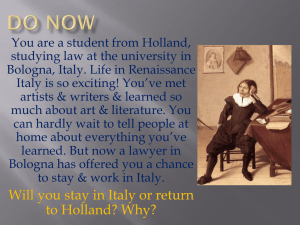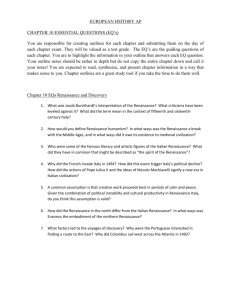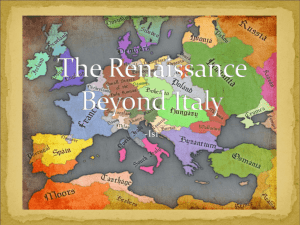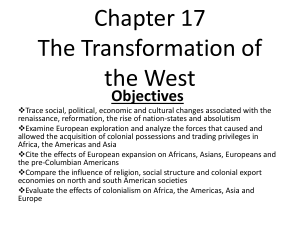PTCostumes
advertisement
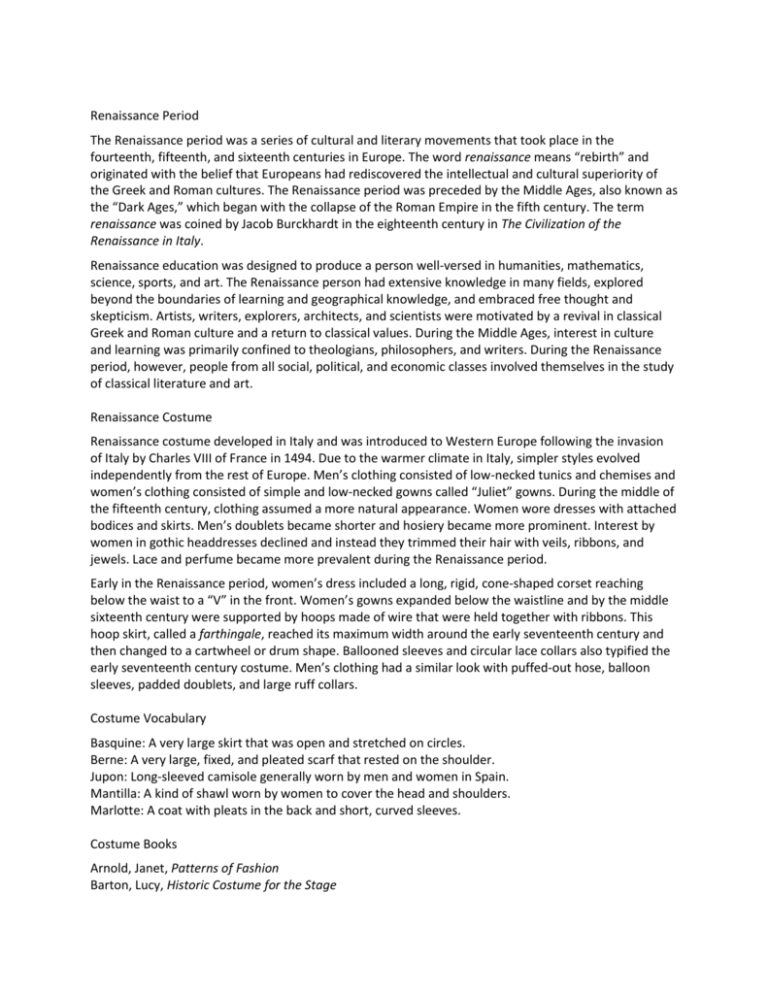
Renaissance Period The Renaissance period was a series of cultural and literary movements that took place in the fourteenth, fifteenth, and sixteenth centuries in Europe. The word renaissance means “rebirth” and originated with the belief that Europeans had rediscovered the intellectual and cultural superiority of the Greek and Roman cultures. The Renaissance period was preceded by the Middle Ages, also known as the “Dark Ages,” which began with the collapse of the Roman Empire in the fifth century. The term renaissance was coined by Jacob Burckhardt in the eighteenth century in The Civilization of the Renaissance in Italy. Renaissance education was designed to produce a person well-versed in humanities, mathematics, science, sports, and art. The Renaissance person had extensive knowledge in many fields, explored beyond the boundaries of learning and geographical knowledge, and embraced free thought and skepticism. Artists, writers, explorers, architects, and scientists were motivated by a revival in classical Greek and Roman culture and a return to classical values. During the Middle Ages, interest in culture and learning was primarily confined to theologians, philosophers, and writers. During the Renaissance period, however, people from all social, political, and economic classes involved themselves in the study of classical literature and art. Renaissance Costume Renaissance costume developed in Italy and was introduced to Western Europe following the invasion of Italy by Charles VIII of France in 1494. Due to the warmer climate in Italy, simpler styles evolved independently from the rest of Europe. Men’s clothing consisted of low-necked tunics and chemises and women’s clothing consisted of simple and low-necked gowns called “Juliet” gowns. During the middle of the fifteenth century, clothing assumed a more natural appearance. Women wore dresses with attached bodices and skirts. Men’s doublets became shorter and hosiery became more prominent. Interest by women in gothic headdresses declined and instead they trimmed their hair with veils, ribbons, and jewels. Lace and perfume became more prevalent during the Renaissance period. Early in the Renaissance period, women’s dress included a long, rigid, cone-shaped corset reaching below the waist to a “V” in the front. Women’s gowns expanded below the waistline and by the middle sixteenth century were supported by hoops made of wire that were held together with ribbons. This hoop skirt, called a farthingale, reached its maximum width around the early seventeenth century and then changed to a cartwheel or drum shape. Ballooned sleeves and circular lace collars also typified the early seventeenth century costume. Men’s clothing had a similar look with puffed-out hose, balloon sleeves, padded doublets, and large ruff collars. Costume Vocabulary Basquine: A very large skirt that was open and stretched on circles. Berne: A very large, fixed, and pleated scarf that rested on the shoulder. Jupon: Long-sleeved camisole generally worn by men and women in Spain. Mantilla: A kind of shawl worn by women to cover the head and shoulders. Marlotte: A coat with pleats in the back and short, curved sleeves. Costume Books Arnold, Janet, Patterns of Fashion Barton, Lucy, Historic Costume for the Stage Boucher, Francois, 20,000 Years of Fashion Brooke, Iris, A History of Costume Evans, Mary, Costume Throughout the Ages LaMar, Virginia A., English Dress in the Age of Shakespeare


